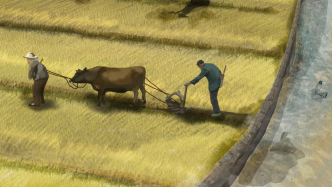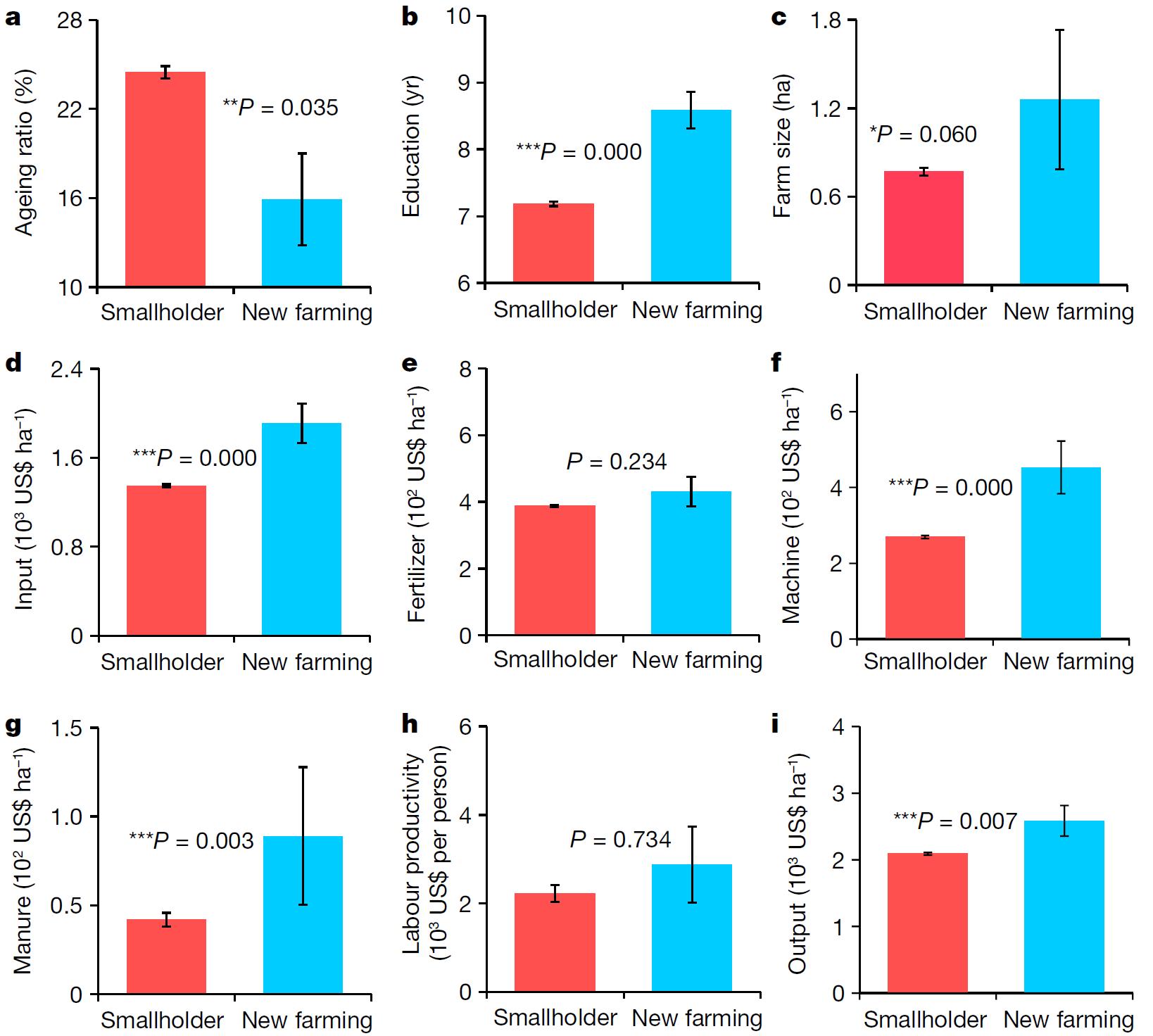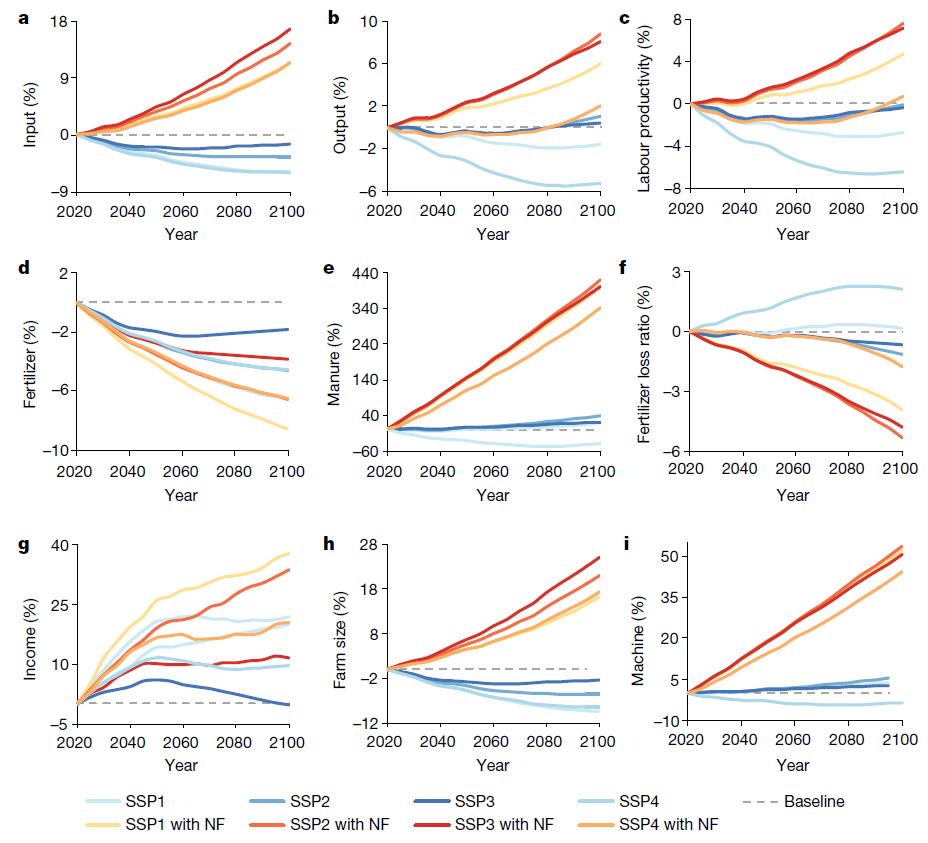

Professor Gu Baojing from the School of Environment and Resources of Zhejiang University and other collaborators at home and abroad published a paper on Nature, which for the first time systematically quantified the impact of rural aging on the sustainable development of China's agriculture.
In October 2022, the data released by the National Health and Health Commission showed that there were 200.56 million elderly people aged 65 and above, accounting for 14.2% of the total population.
Population aging has become a problem that cannot be ignored. What impact will it have on agricultural production?
On February 23, a paper published in the top international academic journal "Nature" gave a warning. The title of the paper is "Aging threatens the sustainability of smallholder farming in China".
When you are old, will you still guard your field? The research data of more than 15,000 farmers for many years revealed the secret? What are the implications for the future?
The researchers found that aging will hinder and threaten the sustainable development of agriculture from three aspects: economic, social and environmental.
Taking 1990, when aging had not yet occurred, as the "frame of reference," the study found that 60 million mu of cultivated land abandoned in 2019 was related to rural aging, resulting in a 4% reduction in the national average farmland size.
The co-first authors of the paper are doctoral students Ren Chenchen and Professor Zhou Xinyue of Zhejiang University, and the corresponding author is Gu Baojing, a tenured professor of the School of Environment and Resources, Zhejiang University.
On February 22, Professor Gu Baojing told The Paper that this is the first time that people have systematically quantified the impact of rural aging on agricultural production and other sustainable agricultural development, and proposed solutions in a targeted manner. In the context of population aging, the agricultural management models of new business entities such as family farms, cooperative farms, and industrialized farms are generally superior to traditional small-scale farming, and can alleviate and offset the impact of aging on sustainable agricultural development to a certain extent. After the scale of operation is increased , it is followed by the initiative to increase productivity, reduce costs and increase efficiency . He hopes that more people will pay attention to and study new business entities, and that governments at all levels will take measures at the policy and institutional levels to benefit and establish more new business entities.

Comparison of traditional small farmers and new business entities in 2019.
Professor Gu Baojing told The Paper that aging is a problem that many countries around the world are facing, and agricultural development is related to food security and social development. The study and its conclusions and proposals have a general theoretical contribution and global significance.
Gu Baojing introduced that through the efforts of researchers from Southwestern University of Finance and Economics, Zhejiang University and other universities, the research data of more than 15,000 Chinese rural families have been accumulated for many years, laying a good foundation for the above research. Using the above survey data, this study quantified the impact of rural aging on the sustainable development of China's agriculture by establishing a fixed-effects model.
Among the abandoned arable land, 60 million mu is related to aging
Rural aging affects agricultural production and management in many ways. Aging is often accompanied by a shortage of youth labor supply and increased abandonment of farmland. Compared with young people, aging farmers usually have lower education level, and it is difficult to adopt scientific management knowledge and advanced technology to operate agriculture, thus affecting agricultural productivity and production efficiency. From 2000 to 2019, the proportion of the population aged 65 and over in rural China doubled. In the next few years, China's population aging problem will continue. To this end, we urgently need to know how the aging of the rural population affects agricultural production and management; how much impact it has on food security, environmental pollution, and sustainable agricultural progress; and how to deal with rural aging to achieve sustainable agricultural development. Answering the above questions is of great significance for analyzing the mechanism of aging on agricultural production and management, exploring effective ways to deal with population aging, and achieving sustainable agricultural development.
The above-mentioned newly published paper uses the survey data of about 15,000 farmer households in China's large family database in 2015, 2017 and 2019, and uses a fixed-effect model to explore the relationship between rural population aging and the sustainable process of agriculture. The results show that in 2019, about 60 million mu of cultivated land in China was abandoned due to the aging of the rural population, which reduced the national average farmland size by about 4%, posing a serious threat to the protection of cultivated land and food security.
At the same time, the aging of rural areas and changes in the scale of farmland have reduced the input of agricultural machinery by 6%, and the input of chemical fertilizers and organic fertilizers by 2% and 64% respectively; the agricultural output and labor productivity per unit area have decreased by 5% and 4% respectively; Disposable income from the agricultural sector is reduced by 15%. In addition, rural aging leads to a 3% increase in the environmental pollution effects associated with fertilizer loss.
How to reverse the negative effects of population aging?
Compared with traditional small-scale farmers, family farms, cooperative farms, and industrialized farms have a significantly lower aging population and higher education levels.
At the same time, the average farmland size among new-type management entities is significantly larger.
The total investment, fertilizer and machinery input of the new business entities are 41%, 113% and 68% higher than those of traditional agriculture, which significantly improves the level of farm management. Compared with traditional small farmers, the output per unit area has increased by 24%, and labor productivity has increased by 29%.

Changes in sustainable agricultural development in China under different shared socioeconomic pathways (SSPs) scenarios. NF: New type of business entity.
Based on multiple shared socioeconomic pathways (SSPs) scenario simulations, the researchers showed that if traditional small farmers are encouraged to continue to transform into new business entities , compared with 2020, agricultural input, farmland size, and farmers' income will increase by about 14% in 2100. %, 20% and 26%, and reduce fertilizer loss by 4%. This shows that the promotion of new business entities can reverse the negative impact of population aging and promote the optimization of agriculture in terms of economic, social and environmental sustainable development.
However, if no intervention measures are taken, in the future, population aging will bring severe food security challenges and environmental pollution pressures, and will also pose threats to ecosystems and human health. In the future, as the aging of China's rural population deepens, the abandonment rate of cultivated land in China will increase from 5% in 2020 to 6%-15% in 2100 (the average value under different SSP scenarios is 11%). The size will be reduced by 2%-9% (7% on average). At the same time, agricultural input, output and labor productivity per unit area will all decrease.
The reviewers believe that this study has greatly deepened people's scientific understanding of the relationship between rural population change and agricultural development, clarified the impact of rural population aging on sustainable agricultural development, and provided a basis for coping with rural aging to achieve sustainable agricultural development. important path. In addition, the study also provides an important scientific basis for the realization of the United Nations Sustainable Development Goals (SDGs) such as "zero hunger" and "no poverty", especially for China and other countries and regions facing similar problems around the world.
The research project was funded by the National Natural Science Foundation of China, the National Key Research and Development Program, and the Zhejiang Provincial Top Soldiers and Wild Goose Program.
Related paper information: https://doi.org/10.1038/s41586-023-05738-w
Valuable content Kudos! casino en ligne Superb forum posts. Thank you! casino en ligne Nicely expressed indeed! . casino en ligne Many thanks. I like this. casino en ligne You actually expressed it perfectly. casino en ligne You said it perfectly.! casino en ligne Reliable postings, Thanks! casino en ligne Perfectly spoken certainly! . casino en ligne Whoa lots of helpful advice! casino en ligne Kudos. Loads of write ups. casino en ligne